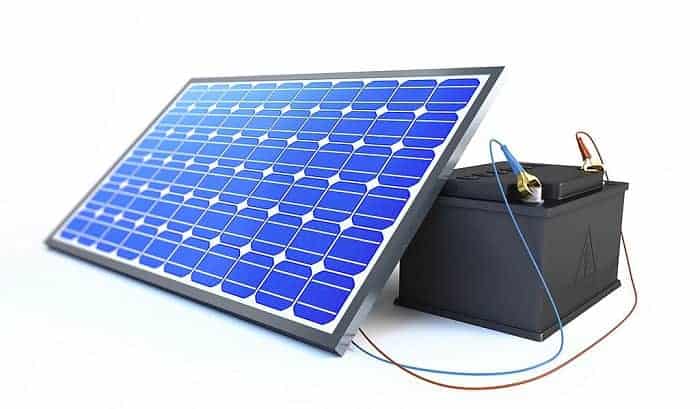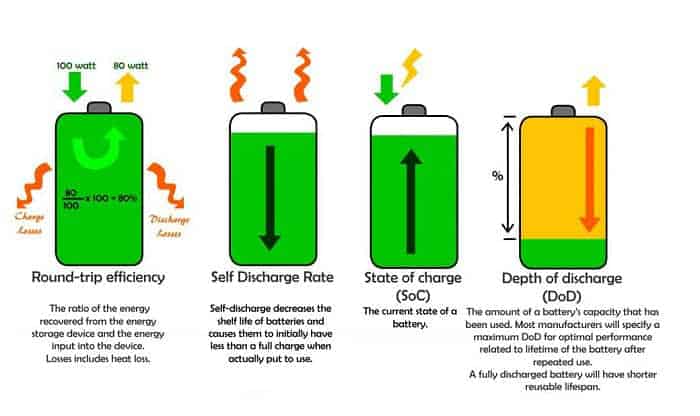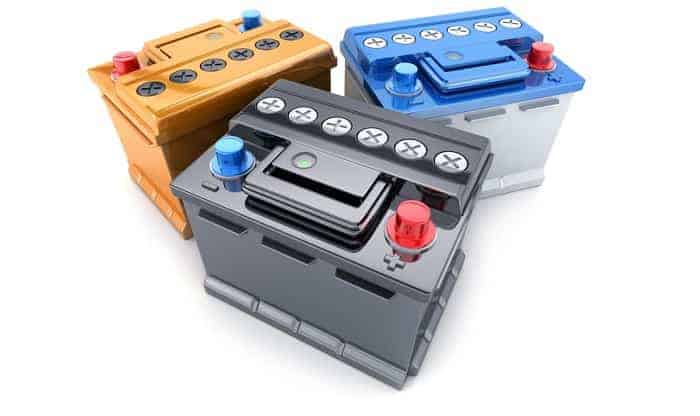Between the significantly increasing electricity costs, destructing natural calamities, and fluctuating grid disruptions, it’s no wonder why more homeowners shift to solar energy to satisfy their energy needs. A solar battery system lets you absorb more solar power and store it until you require energy to light up your place.
Regardless, it’s helpful to ask yourself a few questions first before investing in one. One of these questions is, how long do solar batteries last? It is essential to learn more about the type of battery storage that would be most useful for you.
Chiefly, obtaining excellent results with solar power begins with being a well-informed buyer. Let us explore more on the lifespan of solar batteries to assist you in making a well-thought-of final buying decision.
Table of Contents
The Solar Batteries Lifespan
Sure thing, investing in dependable solar batteries will significantly help you save the electricity your solar panels generate during the daytime. Not to mention, determining the most outstanding batteries for your solar will undoubtedly help you make the right decision. Whether you need a solar system for your tiny house, cabin, RV, or any other setup where you’ll primarily rely on stored power, you need to be adequately informed.
The universal range for a solar battery’s serviceable lifespan is between five up to fifteen years. This means if you install a solar battery now, you’re more likely to replace it at least once to suit the 25 to 30 years lifespan of your photovoltaic system.
Nonetheless, much like the solar panels’ lifespan has dramatically expanded in the past decade, it’s anticipated that solar batteries will follow the mode as the energy storage solutions’ market expands.
Fundamentally, proper maintenance can also have a remarkable impact on the lifespan of your solar batteries. Solar batteries are tremendously affected by temperature, so safeguarding your battery from scorching or freezing temperatures can significantly help extend its serviceable lifespan.
A photovoltaic battery will need more voltage to acquire an optimal charge when it descends below 30-degree Fahrenheit. Meanwhile, when that same battery ascends above 90-degree Fahrenheit, it will overheat and call for a decline in charge.
For you to avoid this problem, plenty of trusted battery manufacturers at present produce solar batteries that come with temperature moderation as an essential feature. Nevertheless, if the solar battery you purchase does not have this feature, you’ll have to look into other solutions such as earth-sheltered enclosures.
Please remember that quality maintenance efforts can notably affect solar battery life expectancy.
What are the Other Factors that Also Affect the Solar Batteries’ Lifespan
Battery Composition
The type of battery you choose could make a remarkable difference; this is especially true when storing solar energy. Batteries based on contemporary lithium-ion technologies call for a more considerable initial investment; however, they are not prone to degrading quickly and can ensure a more extended service.
On the other hand, lead-acid batteries have been well-known and less expensive options for decades; nonetheless, they commonly have a shorter lifetime of 3 to 5 years only.
Temperature
A battery acquires higher chemical activity when stored under high temperatures. This makes solar-powered batteries less potent in colder climates. Notwithstanding, a battery’s cyclic life reduces with the rise in temperature.
The Battery’s Cyclic Life
You can quickly detect a solar battery’s lifespan through the number of use cycles it has or its cyclic life. For instance, you can expect a flooded lead-acid battery to produce 300 up to 700 cycles.
On the other hand, lithium batteries are capable of providing 2000 cycles. A GEL cell battery is powerful enough to generate 500 up to 5000 cycles.
Depth of Discharge (also known as DoD)
This pertains to the range to which you can use a solar battery comparatively to its total capacity. Batteries drop as they are charged or discharged. This, as a result, reduces their capacity to keep more energy.
For example, a battery with a nominal capacity of 100 kilowatt-hours at 60% Depth of Discharge would have an outstanding charge of 40 kilowatt-hours.
Round-trip Efficiency
This refers to the difference between the amount of energy utilized to charge it and the available energy. Of course, a solar battery with a higher round-trip efficiency means that it is more cost-effective. It is critical to search for a round-trip efficiency of roughly 80%.
How to Increase Solar Battery Lifetime
Regardless of how stellar the design of the battery is, if it’s not maintained correctly, this won’t guarantee comprehensive services.
Here are a few tips that could help extend a solar battery’s lifespan:
- Improve Equalization on Solar Batteries
Battery equalization pertains to the overcharging process of the solar-powered batteries at a regulated approach. Hence, unequal charging leads to plate sulphation. Overcharging eliminates this through gassing.
Nowadays, there are solar batteries that are designed with solar charge controllers. Such a feature is beneficial in restraining overcharging.
- Utilize Appropriate Solar Batteries
Batteries that are sized appropriately for their application will guarantee an extended lifetime. These days, more consumers prefer lithium batteries because they have a long lifetime and are conducive and safer for the planet we live in.
All the same, GEL cell batteries remain the most preferred option due to their proven extended lifetime that usually lasts five to seven years when sized appropriately. Be sure that the type of battery you utilize comes with a voltage rating of 25.6 Volts or 12.8 Volts, as these options last longer.
- Regulate the Number of Batteries
Consider reducing the number of batteries utilized at the bank. Utilizing several batteries might bolster connection and resistance that’s more likely to end up into unequal charging. Thus, it is crucial to regulate the number of batteries utilized in your bank up to four or less.
- Ensure that your Solar Battery does not Go Uncharged for an Extended Period
Your solar batteries are more prone to damage if they sit for an extended period in storage. You must constantly switch on your charging source to allow the battery to charge constantly to facilitate an uninterrupted solar light.
What to Search for When Choosing a Suitable Battery for You
There’s no denying that energy storage systems offer countless perks, from ensuring power for emergencies to saving more bucks in the long run. However, not all homeowners are knowledgeable of the technical complexities that solar batteries bring.
So, to help you avoid scratching your head every time you encounter unfamiliar terminologies, we have listed some of the factors for you to focus on and search for in a solar battery.
How to decide which specs of solar batteries are the most important for your requirements?
Honestly, you have several comparison points and distinct potential decision criteria to make when assessing your energy storage choices.
Here are some of them:
- Higher Usable Capacity: You should search for a battery that comes with a higher usable capacity if you wish to run your home with your battery for an extended period.
- High Power Rating: Search for a battery that comes with a high power rating. This feature is vital if you prefer to power more of your home or workplace at once.
- High Instantaneous Power Rating: This is valuable if you want to ensure that you can power more energy-intensive appliances. For example, you need to power a sump pump; you’ll require a battery that comes with a high instantaneous power rating.
- LFP batteries: These batteries are designed with the highest safety rating and the most extended lifetime. In short, if safety is your top concern, these alternatives will give you more peace of mind.
What’s more, you can cycle lithium iron phosphate batteries for the most amount of time.
- Higher Round-trip Efficiency: Batteries with higher round-trip efficiency will enable you to get the most out of every kilowatt-hour of electricity that you store into them.
- Lithium-ion Nickel Manganese Cobalt (NMC) Batteries: These types of batteries are for space-constrained applications and if you want to ensure obtaining the most amount of storage out of the tiniest amount of space.
Conclusion
It is significant to note that not all solar batteries are created equal. Specific solar battery systems incorporate leading-edge design and technologically advanced features to avert the degradation process. On average, some solar batteries commonly last for just a few years; however, a top-quality system is capable of satisfying your storage requirements for 5 to 15 years.
The life of solar panel batteries relies on many different complex factors. So, understanding how these factors affect the extended performance of a solar battery can help you decide the most suitable alternative for your application. Hopefully, the information shared in this post can help you better understand the solar battery options suitable for you.

I am Kathleen Miller, staff writer and reviewer of the Avasolar team. Working with the team has been a pleasure for me so far, I hope to bring readers useful information by creating detailed and easy-to-follow contents.



